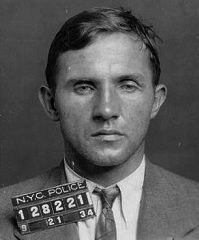Was He Guilty?
The most famous kidnapping in Amercian history is the March 1, 1932 snatching of the child of iconic pilot Charles Lindbergh. The crime transfixed the nation. It was dubbed the “Crime of the Century” by the media.
The Lindbergh’s had an estate in East Amwell, New Jersey, where the “Lone Eagle” lived with his wife, Anne, and his 20-month-old son, Charles Lindbergh Jr. and several servants. At 10pm on March 1st the child was discovered missing from his room. A perp or perps had used a homemade ladder to climb into the room and make off with the child. They left a ransom note with instructions to make payments in exchange for the child.
Hopewell Police and the NJ State Police led the investigation with the assistance of the FBI (who had no jurisdiction at that time). There was extensive crime scene processing and canvasing that didn’t turn up anything useful. On April 2 the ransom money was paid through an intermediary. The bill’s serial numbers were all recorded in the hopes that they could be tracked.
On May 12, the body of the poor child was found in the weeds by the side of a road close to the Lindbergh estate. It appeared that the child was killed on the day of the kidnapping. A homicide had occurred, and the focus was now making an arrest and getting justice for the victim.
Police began to receive reports of the marked money being spent on the upper east side (then a German neighborhood). Tracking the money was now the investigators best bet at solving the case. In September 1934 (more than two years after the crime), a sharp bank teller noted that a license plate number was written on one of the prerecorded serial numbered bills.
The bill was traced to a mechanic who had written the license number on it because he felt it the customer was suspicious. The owner of the car was Bruno Hauptmann. Bruno was an illegal German immigrant with a criminal history back in the old country. When he was arrested at his Bronx home, there was $14,000 in the marked money found secreted in his garage. Search warrants turned up additional evidence such as ladder sketches and handwriting samples that matched the ransom note.
On February 13, 1935, Hauptmann was found guilty on all counts by a New Jersey jury. No one had been able to place Hauptmann at the scene, but there was plenty of other evidence. He was executed a year later.
Some have questioned Hauptmann’s guilt in the case. His wife vocally proclaimed his innocence until her death in 1994. However, these denials seem farfetched. Some claimed that the police framed Hauptmann. The crime scene had been contaminated and police did appear to withhold some information from the public avoid embarrassment.
The circumstantial evidence seems overwhelming. He had been seen in the area in the days before the crime. Wood from the ladder matched wood found in his home. The ransom note not only matched Hauptmann’s handwriting, but even misspellings were the same. The courier who picked up the ransom money identified Hauptmann as the man who hired him. Sketches and phone numbers related to the crime were found in Hauptmann’s home. There is very little doubt that cops got their man.
Christopher Flanagan











